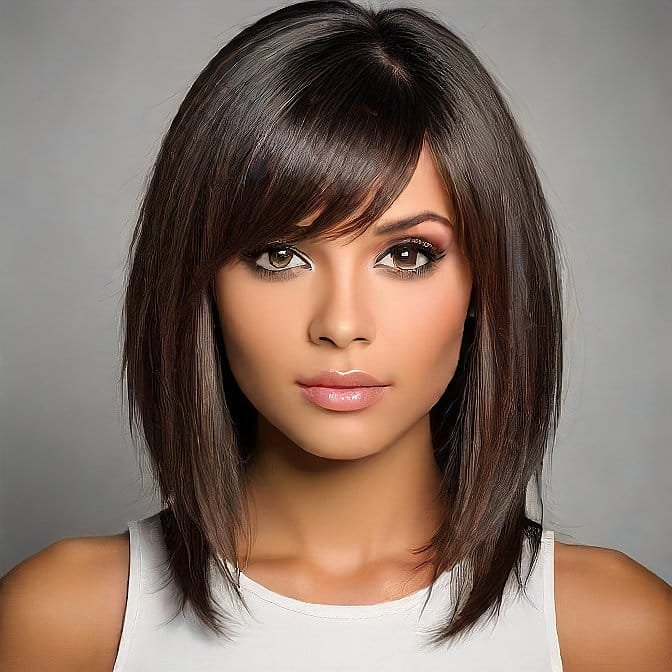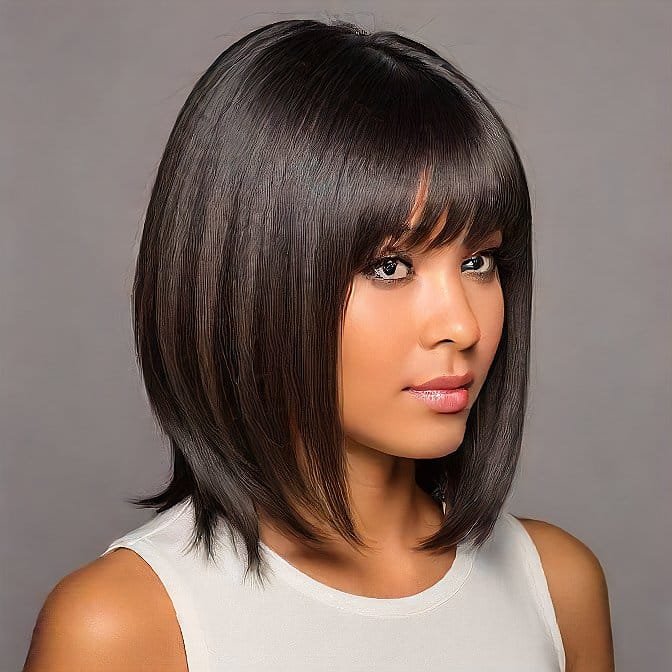Table of Contents
Introduction
The butterfly layers haircut is a layered haircut that is purposefully created to create motion, body, as well as depth to the hair being cut. This popular cut has many layers, which range from short to long, and is styled to resemble the wings of a butterfly. Butterfly layers cut is appropriate, elegant, and ideal for anyone who is searching to spice up their look with some class.
What is a Butterfly Layers Haircut?
Butterfly layers is a name given to the layered cut and the formed movement of the hair. The different layers blend without the slightest difficulty and extend from short length to long length, with medium-length layers. As the hair shuffles, these layers rise and produce a flickering resemblance to the exact motion of a butterfly’s wings while in the air. The outcome is that your hair becomes soft, textured, misty voluminous, and full of bounce.
There are cases though that butterfly layers can be shorter or longer and would suit hair lengths from the chin down to several inches by the shoulder length. Those who have straight hair may want to add some waves or curls to get the most out of the movement of the layered end. Those with curly or wavy hair types appreciate the layers as there is always bounce and volume to the hair which may otherwise fail to hold a collection.
Advantages of Butterfly Layers Haircut
It is possible to select a Butterfly Layers Haircut for your upcoming hairstyle opportunity and obtain several benefits. Some benefits include:
- Volume and fullness: The layers shed mass through the whole hair, and it enhances the amount of air that’s in a position to penetrate the hair. This gives a natural lift on roots and prevents the formation of flat spots.
- Movement and flow: Gradual layering towards the face decreases as you go towards the back, sweep for movement is added as you move around.
- Versatility: Butterfly layers can be done on straight, wavy, or curly hair. The cut is also suitable for many types of partings and one can go for a straight hairstyle or add curls or waves to it.
- Easy styling: The layers come out as a natural addition, hence reducing the use of heat that may harm your hair. Spending lengthy hours in front of the mirror getting ready becomes easy, and air drying or quick blowouts become easy.
- Body and bounce: It allows hair to be lightweight to easily react to natural movements or even styling. The ends finally open up into a light, sexy turn.
Check Out: Curly Butterfly Haircuts: The Playful Chic Look Women Managers differently.
Face Shapes when Wearing Butterfly Layers Haircut

The ability to layer a cut in the structure as dynamic as a butterfly has the flattering effect of framing the face in all sorts of shapes. The most complementary include:
- Oval faces: The balance of an oval face shape can complement butterfly layers. Short layers at the face frame the face to minimize narrowing, while longer layers at the back accentuate the oval shape.
- Round faces: layering assists in providing dimensions and angles, thus reducing roundness. Piecy ends alongside the cheeks, tender slim fuller face.
- Heart-shaped faces: The outer layers reproduced from and around the forehead and cheek area create a wider illusionary point of focal balance to the narrower chin. The layers help to eliminate width and perhaps protruding sharp ends in the shape.
- Diamond faces: This reduces sharp cheekbones and a slight jawline into the overall look of an angular diamond shape in a face. The ends give volume at corners and balance and similarity.
Ways to Style A Butterfly Layer Haircut
The most appealing thing about butterfly layers is that they do not require much effort to style. To enhance the fluidity of your new layered locks:
- Air dry: Let your hair dry naturally, as this will give your hair the best natural texture and movement. The layers will drop and, in turn, will glide down effortlessly.
- Add waves: When curling, use a curling iron to achieve soft-looking waves on the layers of your hair, and do so sparingly. This increases the degrees of movement, not in a styled manner.
- Try a side part: Part it to one side. This permits the layers to be stacked and will reveal the depth of the cut.
- Use product: Apply a small amount of mousse, gel, or styling cream onto damp hair before blow-drying. It allows shorter layers to gain a fuller movement.
- Go sleek: Use a paddle brush to blow dry your locks straight so that you may see the layering. Add shine serum to finish.
- Diffuse curly hair: For curly cuts, always let the hair dry or have the curls diffused to enhance the curls and ringlets in the layers.
- Create flips: For longer layers, use a large barrel curling iron to flip out the end for some added volume.
Purchase Clothes for Your Butterfly Layers Haircut

When people decide to get a butterfly layer cut, they need to consult an experienced professional. Be sure to:
- Bring inspiration pics: Let the stylist see photos of your desired hair length and density, layering, and motion. Recall images as they cut.
- Consult on hair health: To start with, describe the condition of your hair, and the activities you normally undertake in a day to enable the stylist to understand your hair type.
- Request face-framing: Pay particular attention to layers around your face, ensuring that the clothes you wear enhance your looks. They should be complementary and mutual.
- Take your time: A layered cut is actually a complex one and ought to be done in stages, and hence must be done properly. As it is well understood, quick chops can be appalling and may not be conducted in a uniform manner.
- Embrace the change: Remember that it’s likely the first lighter layer of the day will feel like a whole other experience. However, there should be a gap provided for an individual to transition to the new movement.
Conclusion
This haircut is named the butterfly layers, thanks to the layers’ softly fluttering appearance and the haircut’s flowy, dimensional shape. This cut rocks for straight, wavy, or curly hair types; it is still piecy but not too much, and what’s more important, it looks extremely feminine.
Butterfly layers when maintained with trims and styled with waves or curls glide seductively while falling around the face. The lightness takes off the weight for fuller, bouncier hair that feels healthier right after washing. Styling is always a breeze, it doesn’t require much attention, and there is certainly some playfulness and cheerfulness in this cut – it simply needs its wings.
For More Info: Click Here.
FAQ’s About Butterfly Layers Haircut
Which face shape should Butterfly Layers Haircut suit?
Butterfly layers suit oval, round, heart shape, and diamond face shapes. The layers are also useful in balancing or complementing other features. They are added while rounding sharp edges whilst introducing angles.
How often should butterfly layers be trimmed?
To avoid the shortest layers looking too bulky and uneven, best practice suggests that you should trim your butterfly layers at 2 to 3 months or after 8–12 weeks. This preserves the angle laid down to cut, such that the shape does not grow out.
How do you style second-day butterfly layers?
On the second day, wash butterfly layers and gently apply some dry shampoo at the roots to remove oils and add volume. Then the curls, the waves, the pieces that can be straightened with a curling iron, flat iron or just diffusing the hair.
Are butterfly layer haircuts appropriate for men?
Yes! Still, despite the generally stereotypical nature of butterfly layers and attributions associated with them, men are more than capable of wearing this hairstyle. The cut is ideal with medium to long men’s styles where layering makes the hair more light and free-flowing. Product adds shine, and glamour in a manner that can be touched.
Butterfly layers: what hair length is the best?
Butterfly layers can be done on hair that is at chin length all the way down to several inches below the shoulder-length hair. Although a very short hairstyle will maximize the blending of layers, the hair fades too much when cut with short layers. Hair longer than several inches below the shoulders becomes over-weighted to support the lightness of the layer.

